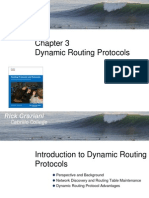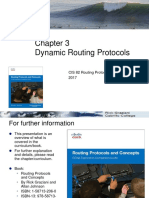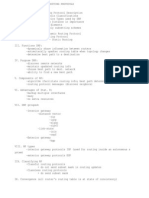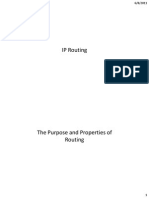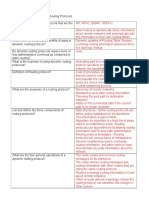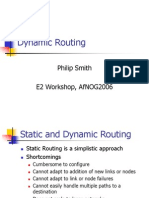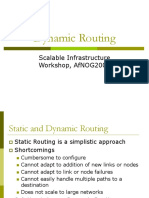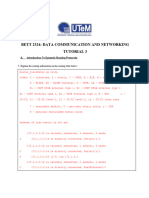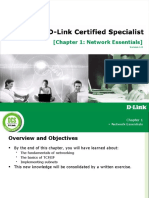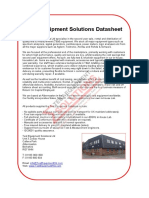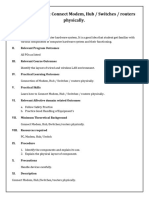0% found this document useful (0 votes)
13 views17 pagesDynamic Protocols
Dynamic routing protocols facilitate the exchange of routing information between routers, enabling them to dynamically learn about remote networks and determine the best paths. They can be classified into Interior Gateway Protocols (IGP) and Exterior Gateway Protocols (EGP), with further distinctions between distance vector and link-state protocols. The effectiveness of these protocols is measured by convergence speed and administrative distance, which helps routers decide the best route when multiple sources provide information.
Uploaded by
زكريا الاهدلCopyright
© © All Rights Reserved
We take content rights seriously. If you suspect this is your content, claim it here.
Available Formats
Download as PPT, PDF, TXT or read online on Scribd
0% found this document useful (0 votes)
13 views17 pagesDynamic Protocols
Dynamic routing protocols facilitate the exchange of routing information between routers, enabling them to dynamically learn about remote networks and determine the best paths. They can be classified into Interior Gateway Protocols (IGP) and Exterior Gateway Protocols (EGP), with further distinctions between distance vector and link-state protocols. The effectiveness of these protocols is measured by convergence speed and administrative distance, which helps routers decide the best route when multiple sources provide information.
Uploaded by
زكريا الاهدلCopyright
© © All Rights Reserved
We take content rights seriously. If you suspect this is your content, claim it here.
Available Formats
Download as PPT, PDF, TXT or read online on Scribd
/ 17
